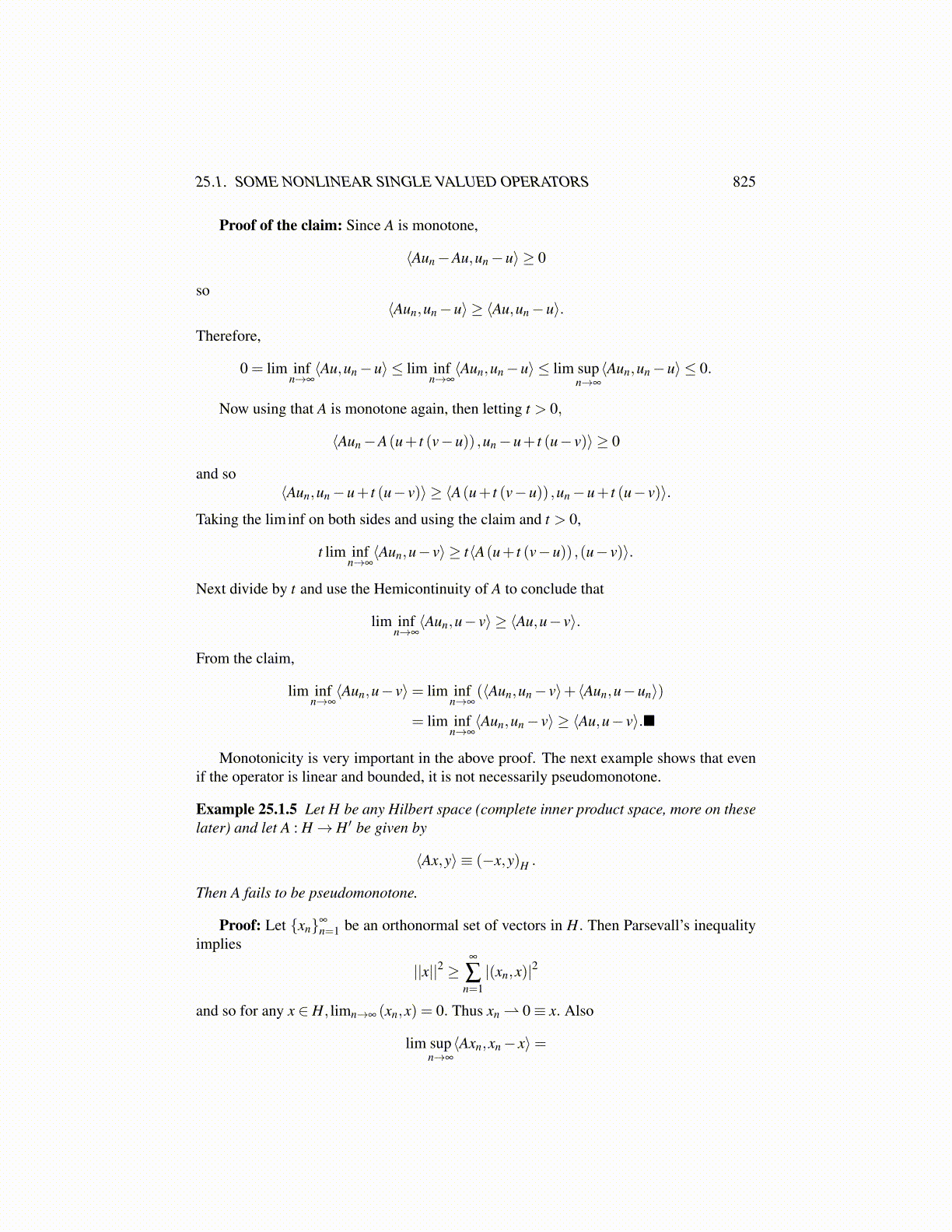
25.1. SOME NONLINEAR SINGLE VALUED OPERATORS 825
Proof of the claim: Since A is monotone,
⟨Aun−Au,un−u⟩ ≥ 0
so⟨Aun,un−u⟩ ≥ ⟨Au,un−u⟩.
Therefore,
0 = lim infn→∞⟨Au,un−u⟩ ≤ lim inf
n→∞⟨Aun,un−u⟩ ≤ lim sup
n→∞
⟨Aun,un−u⟩ ≤ 0.
Now using that A is monotone again, then letting t > 0,
⟨Aun−A(u+ t (v−u)) ,un−u+ t (u− v)⟩ ≥ 0
and so⟨Aun,un−u+ t (u− v)⟩ ≥ ⟨A(u+ t (v−u)) ,un−u+ t (u− v)⟩.
Taking the liminf on both sides and using the claim and t > 0,
t lim infn→∞⟨Aun,u− v⟩ ≥ t⟨A(u+ t (v−u)) ,(u− v)⟩.
Next divide by t and use the Hemicontinuity of A to conclude that
lim infn→∞⟨Aun,u− v⟩ ≥ ⟨Au,u− v⟩.
From the claim,
lim infn→∞⟨Aun,u− v⟩= lim inf
n→∞(⟨Aun,un− v⟩+ ⟨Aun,u−un⟩)
= lim infn→∞⟨Aun,un− v⟩ ≥ ⟨Au,u− v⟩.
Monotonicity is very important in the above proof. The next example shows that evenif the operator is linear and bounded, it is not necessarily pseudomonotone.
Example 25.1.5 Let H be any Hilbert space (complete inner product space, more on theselater) and let A : H→ H ′ be given by
⟨Ax,y⟩ ≡ (−x,y)H .
Then A fails to be pseudomonotone.
Proof: Let {xn}∞
n=1 be an orthonormal set of vectors in H. Then Parsevall’s inequalityimplies
||x||2 ≥∞
∑n=1|(xn,x)|2
and so for any x ∈ H, limn→∞ (xn,x) = 0. Thus xn ⇀ 0≡ x. Also
lim supn→∞
⟨Axn,xn− x⟩=